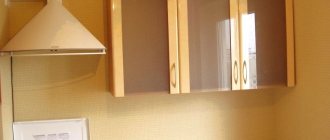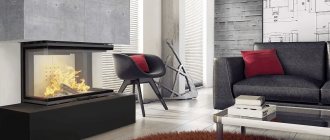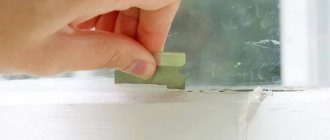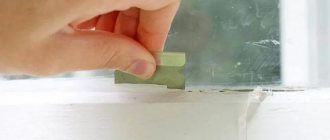Looking at yourself in a store window, washing your face and looking in the mirror in the morning, watching the strange mixing of coffee with milk through the transparent walls of a cup are common activities. And no one thinks about the path that glass takes to become an integral attribute of the life of a modern person. It all starts with mixing unusual ingredients.
Glass production technology begins with the preparation and mixing of the constituent parts. The quality of glass products depends on the degree of preparation of the ingredients.
Glass substrate sorting
Before glass is made, the sand is sifted and sorted. Raw materials of poorer quality are used for the production of window glass, while the best are used for the manufacture of tableware, jewelry, optical lenses and artistic products. The difference in the size of the grains and the chemical composition affects it: the finer the sand, the wider the scope of its application. If large grains of sand predominate, then such sand is the main raw material for window glass.
Recommendations for glassmaking
Finally, we offer you a few more tips on making glass at home:
- Beach sand can be used instead of special quartz sand. It should be the whitest, most uniform and thin. However, the quality of such glass will not always be necessary.
- Coarse sand or additives must be crushed in advance. To do this, use a mortar or crusher.
- Before cooking, you can put pre-crushed pieces of glass in the sand. This way you can recycle them into new glass.
- Be sure to wear a mask before crushing glass.
Manufacturing equipment
The glass production process is, of course, lengthy, but nowadays most operations are automated. The equipment is varied and expensive.
Main equipment of glass factories:
- vehicles for transporting sand from quarries to conveyors;
- conveyor belts for moving raw materials to sorting areas;
- sand washing drums;
- sorting devices;
- filtering installations;
- installations for mixing components;
- glass melting furnaces;
- leveling baths or devices for drawing sheets of glass;
- conveyors equipped with rollers for moving glass around the workshop;
- automated device with diamond for cutting sheets;
- pneumatic gripping devices.
Where can I get quartz sand?
Natural crystalline quartz comes from Brazil. Its deposits are also known in Switzerland, Uruguay, Burma, India, Sri Lanka, as well as Madagascar. A large number of the largest deposits of quartz sand are located in Russia.
Interesting materials:
How do you know if you have salmonella? How can you tell if you have a gas leak? How to understand additional education? How to understand a septic tank? How to understand commercial? How to understand the review? How to understand Other income? How to understand the patency of the fallopian tubes? How to lower bilirubin in an adult? How to get to the Faroe Islands?
Glass at home
Craftsmen can make glass even at home. First you need to calculate the proportions of the components. Having studied what glass is made from, the composition of the future glass mixture includes: sand, soda, lime, broken glass.
The procedure for making glass at home:
- Preparation of main components. You need to heat 180 grams of baking soda over a fire until the moisture evaporates. Heat 400 grams of sifted, washed sand over a fire and dry. Grind 80 grams of lime. Pour into one bowl. Add 10 grams of boric acid and two table salts.
- To make glass yourself, you need to prepare a container. To maintain integrity in high heat, it is advisable to coat metal dishes with a mixture of liquid glass and clay in several layers. To do this, mix a few tablespoons of modeling clay with water until liquid. Then add one or two tablespoons of liquid glass. Using a brush, coat the dishes.
- Heat the coated vessel with gas. Its surface will be covered with convex “pimples”.
- Prepare broken glass: sift the broken dishes. Place three tablespoons of small glass particles in a cooking vessel. Add the rest of the raw materials.
- Place the resulting mixture on the fire. You can blow it with a forge. After three to four hours, the mixture will melt to a liquid glass consistency.
Market
The global glass manufacturing market was valued at $127 billion in 2022 and is projected to grow at a rate of 4.1% between 2022 and 2027.
The main factors that can drive the market growth are the ever-increasing demand for consumer electronics and the penetration of artificial intelligence in consumer and business applications.
Flat glass is expected to play a key role in architectural designs over the coming year.
A recent trend sees a rapid transition in building architecture that maximizes natural daylight through the integration of flat glass into roofs and facades. Because triple silver insulated flat low-e glass offers significant energy savings, it can be widely used in green buildings around the world. Solar flat glass is also likely to grow significantly in the next few years.
China is currently the world's leading exporter of glass and glass products, accounting for more than 23% of global glass and glass products exports, valued at approximately $18 billion. Germany and the USA account for approximately 9% and 7% of global glass exports.
Quality Standards
There are a huge number of types of glass. To determine the quality of each type, state standards have been created, which describe the properties and quality characteristics.
There are GOST standards for quartz, sheet, medical, multilayer, curved, inorganic, optical and other types of glass. They describe production technologies, brands, methods for determining quality, and classification.
Glass brands
Large manufacturing companies produce a wide range of sheet glass types. This is due to the popular glazing of large office and retail buildings in major cities. Therefore, manufacturers often use GOST No. 111-90 “Sheet glass. Technical conditions".
According to their intended purpose, glass is divided into the following grades:
- M1 - mirror improved. The thickness of the products is no more than 6 mm and no less than 2 mm. Designed for car windshields and high-quality mirrors.
- M2 - mirror. Used for the production of mirrors and glass in public transport.
- M3 - polished technical. They produce decorative furniture elements and mirrors.
- M4 - polished window. Serves for high-quality glazing of translucent, safety glass structures of vehicles.
- M5 - unpolished improved window. Used for glass of agricultural vehicles.
- M6 - unpolished window. Used to create translucent structures.
- M7 - polished display case. Thickness ranges from 6.5 mm to 12 mm. Used in the design of shop windows and stained glass.
- M8 - unpolished display case. Showcases and lanterns are made from it.
Purposes of matting
Frosting of glass is rarely done, but most often this happens when:
This is typically done for door inserts, windows, and shower screens.
They want to get rid of transparency.- Add originality to old products. This is usually done on furniture mirrors, lamps, dishes and other products.
If you are interested in how to make ordinary glass frosted with your own hands, you are unlikely to want to resort to expensive services. In our article you will find several proven methods that will help you do this inexpensively and with your own hands.
Classification of glass products
Around a person there are a lot of objects made of glass or with its inclusions. They can be summarized by intended use.
Main groups of glass products:
- Household products. Which in turn are divided into household, artistic and decorative, kitchen utensils. Household products are used for canning and storing food. Artistic and decorative - have high aesthetic properties and are used to decorate the interior. Kitchen utensils are made of borosilicate or sital glass, which has fire-resistant properties. Therefore, the assortment is represented by braziers, saucepans, and roasting pans.
- Construction glass - glass used in construction. Production includes glass for windows, shop windows, stained glass, double-glazed windows, glass blocks, and other construction products.
- Technical - glass that has a narrow specialization. Includes medical optical, laboratory glassware, transport glassware, electrical glassware, and car parts.
Discoverers
History, as usual, has not bothered to preserve the names and faces of those worthy people who gave glass to the world. Actually, there is nothing surprising in this: according to the Roman historian Pliny the Elder, the discoverers were Phoenician sailors. Moreover, the discovery, like most of its kind, was made by accident.
If we ignore the high style and ancient Latin in which Pliny’s “Natural History” was written, the story turns out as follows. One day, a Phoenician merchant ship, caught in a strong storm, was forced to drop anchor in a small bay. Tired and chilled sailors went ashore. They began to look for a place to make a fire in order to cook some stew for themselves and keep warm. The shore was sandy, and nowhere were there any stones on which to place the boiler. Then it occurred to one of the sailors to take out blocks of soda from the hold of the ship, which were being transported for sale, and put a boiler on these blocks.
So, it was on these soda blocks that the Phoenician sailors placed a cauldron of water. The fire turned out to be extremely successful. The sailors ate heartily and went to bed. In the morning, getting ready to set off, one of them scattered the smoldering remains of the fire. Suddenly he noticed some shiny pieces in the ash. They did not look like wood, nor metal, nor clay, nor stone. Until then, no Phoenician had seen such strange light pieces. This new mysterious substance - according to Pliny - was glass: an alloy of coastal sand with soda.
This story will most likely be remembered by everyone who read a history textbook at school. For some reason, this version is loved by many to this day. But how plausible is it? Alas, modern glassmakers have quite convincingly proven that the ancient historian was wrong. Or he said something incorrectly. But the fact remains: it is impossible to weld glass from soda and sand in the flame of a fire.
More realistic seems to be the assumption that, by chance, a mixture of sand and soda fell on the clay pot before firing. And the potter, who took the finished product out of the oven, noticed a thin shiny film covering the sides of the vessel.
In general, as to who was lucky with the opening of the glass, one can only guess and believe either the story about the Phoenician sailors, who were generally wonderful guys, or support the version about the lucky and attentive potter. Those who study the history of the origin of this material will someday come to a consensus regarding the place - Egypt, Phenicia or Mesopotamia, Africa or the Eastern Mediterranean, etc. - and regarding the time - “about 6 thousand years ago”, but the characteristic “synchronicity of discoveries " can be observed, and the difference even of hundreds of years is not of great importance, especially when significant differences can be traced in the reconstructed method of glass melting.
Application of glass
Glass products are used in many areas of human activity. In some, its hardness is important, in others - transparency, quality is valued equally everywhere.
Directions for glass application:
- Optics. The highest priority is given to the transparency of future optical elements. Used in scientific, military, aerospace activities and for the production of consumer optics.
- Clear glass. They are actively used in construction for the construction of lighting structures.
- Colored glass is the basis for creating stained glass and other mosaics.
- Art glass. This type is used to create original decorations and interior elements.
- Glass enamel. This is a durable material with high abrasion resistance. It is actively used for coating ceramic tiles, bathtubs, faience sanitary ware, and galvanic baths.
- Fiberglass, fiberglass. They are used to produce glass wool, fiberglass laminate and other materials.
- Optical fiber. It is used to make special threads for communications, the Internet, and television networks.
- Photochromic glass. This type of glass is used to protect from light. Used in the production of sunglasses and for darkening windows in public transport.
- Dielectric glass is actively used for the production of insulators in the electrical industry.
What is known about glassmaking?
It is known from history that glassmaking is a very ancient process. How it's done? The time frame dates back to approximately the period before 2500 BC. Previously, such a rare and valuable occupation has now been replaced by the widespread production of this material.
Glass products are found everywhere. They are used as containers, household and decorative elements, insulators, reinforcing fiber and other things. Glasses differ only in the constituent material used for manufacturing. But the process itself is almost the same.
Basic materials you will need:
- the main element is quartz sand (silicon dioxide);
- sodium carbonate or soda;
- calcium oxide, also known as lime;
- furnace for melting glass;
- other salts and oxides that can be used additionally on an individual basis (oxides of aluminum, iron, magnesium, lead and calcium or sodium salts);
- protective clothing;
- grill;
- charcoal;
- molds and other elements for giving shape;
- fireproof crucible.











